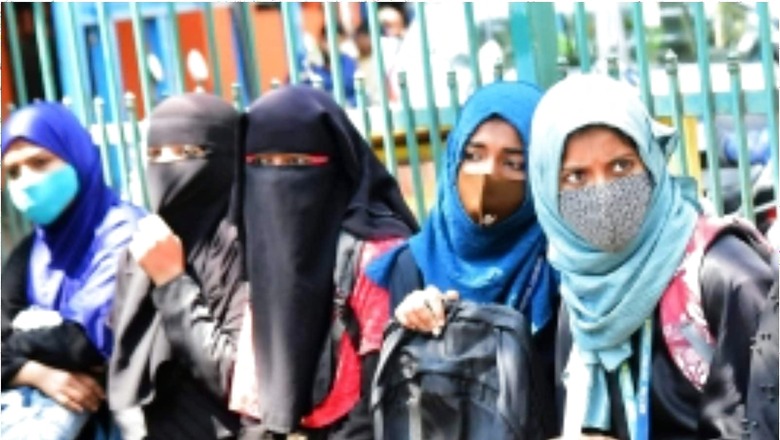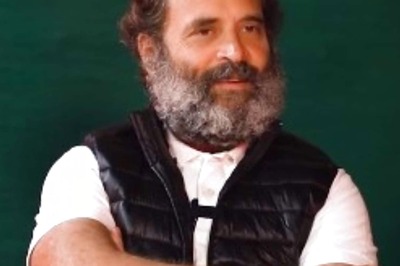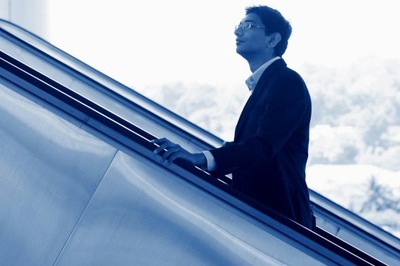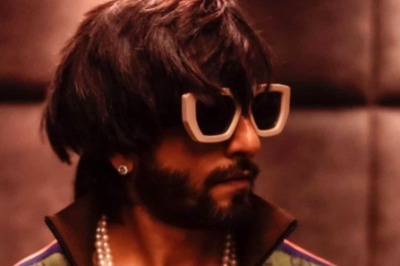
views
A bench of Justices Hemant Gupta and Sudhanshu Dhulia delivered a split verdict on the Karnataka Hijab ban row on Thursday and referred the matter to the Chief Justice of India for the constitution of an appropriate bench to consider the contentious issue.
While Justice Hemant Gupta upheld the ban and ruled that hijab is not an essential religious practice, Justice Sudhanshu Dhulia struck down the ban, saying the education of the girl child is most important. The bench had reserved the verdict on the petitions on September 22 after hearing arguments in the matter for 10 days.
During the arguments in the apex court, a number of the counsel appearing for the petitioners had insisted that preventing girls from the Muslim faith from wearing the hijab to the classroom will put their education in jeopardy as they might stop attending classes. Counsel for the petitioners had argued on various aspects, including the state government’s February 5, 2022 order which banned wearing clothes that disturb equality, integrity, and public order in schools and colleges.
Read | Hijab Row: Final Verdict is Very Important, Says Karnataka CM Bommai
Some advocates had also argued that the matter should be referred to a five-judge constitution bench. On the other hand, the counsel appearing for the state had argued that the Karnataka government order that kicked up a row over hijab was “religion neutral”. The case would now be re-heard by a larger Bench. Let us see what the two justices had to say:
Justice Hemant Gupta
Supreme Court judge Justice Hemant Gupta dismissed appeals challenging the Karnataka High Court judgment which upheld the state government’s February 5 order, prohibiting the wearing of hijab inside classrooms in pre-university colleges.
Justice Gupta said, “Secularism is applicable to all citizens, therefore, permitting one religious community to wear their religious symbols would be the antithesis to secularism. Thus, the Government Order cannot be said to be against the ethic of secularism or to the objective of the Karnataka Education Act, 1983.”
“If a particular student feels that she cannot compromise with the wearing of a headscarf or of any other student to wear any outwardly religious symbol, the school would be justified not to allow such student, in the larger interest of treating all the students alike as a part of the mandate of Article 14, which is central to the theme of Part III of the Constitution,” he added.
He said the students are expected to maintain discipline and the school is responsible to lay a strong foundation so as to nurture the students as responsible citizens of the country.
“In fact, uniform fosters a sense of ‘equality’ amongst students – instills a sense of oneness, diminishes individual differences, helps focus on learning as students would not be bothered about their social status, improves discipline, fewer conflicts in school, promotes school spirit, generates a sense of belonging, pride, loyalty towards the school, relieves economic pressure on the parents, ensures equality before the educational institution, serves the need of a diverse community and promotes a positive sense of communal identity and does not lead to the growth of disparities of wealth and style,” he said in a 133-page judgment.
He said the Karnataka government has not prevented the students from attending classes and, if they choose to stay away due to the issue over the uniform that has been prescribed, it is a voluntary act and the state cannot be accused of violating Article 29 (Protection of interests of minorities). “It is not a denial of rights by the State but instead a voluntary act of the students. It would thus not amount to a denial of the right to education if a student, by choice, does not attend the school. A student, thus, cannot claim the right to wear a headscarf to a secular school as a matter of right, he said.
“The Government Order cannot be said to be contrary to the legitimate State goal of promoting literacy and education. Article 21A is not applicable as all the students are over 14 years of age. The students have a right to education under Article 21, but not of insisting on wearing something additional to the uniform, in a secular school, as a part of their religion,” he held.
Responding to the comparison with Sikhism and students following the faith carrying the kirpan to educational institutions, the judge said,” It would not be proper to discuss the essential religious practices of the followers of the said faith without hearing them.” “The practices of each faith have to be examined on the basis of the tenets of that religion alone. The essential religious practices of the followers of Sikh faith cannot be made the basis of wearing of hijab/headscarf by the believers of Islamic faith,” he said.
Justice Dhulia on the other hand said it is necessary to have discipline in schools but not at cost of freedom and dignity.
Justice Dhulia, who set aside the Karnataka High Court verdict which had refused to lift the ban on hijab in educational institutions of the state, referred to one of the findings in the high court judgment and said it is difficult to accept. “This is where the high court determines that the petitioners cannot assert their Fundamental Rights inside a classroom which the court terms as ‘qualified public places’ and the rights inside a school are only ‘derivative right’, he said in his 73-page separate judgement.
“Schools are not required to have the discipline and regimentation of a military camp. Nevertheless, in my understanding, what the high court wanted to convey was that all public places have a certain degree of discipline and limitations and the degree of enjoyment of a right by an individual inside his house or anywhere outside a public space is different to what he or she would enjoy once they are inside a public space,” he said. Justice Dhulia observed, as a general principle, one can have no quarrel with this proposition. In his verdict, Justice Dhulia noted school is a public place, yet drawing a parallel between a school and a jail or a military camp, is not correct.
Justice Dhulia observed that another question which the school administration and the state must answer in this case is as to what is more important to them — the education of a girl child or the enforcement of a dress code.
“She is our hope, our future. But it is also a fact, that it is much more difficult for a girl child to get an education, as compared to her brother,” he said. “Asking a pre-university schoolgirl to take off her hijab at her school gate, is an invasion of her privacy and dignity. It is clearly violative of the Fundamental Right given to her under Article 19(1)(a) and 21 of the Constitution of India,” he said, adding, “It is still her Fundamental Right, not a derivative right’ as has been described by the high court.” The judge said wearing hijab may or may not be a matter of essential religious practice, but it still is a matter of conscience, belief, and expression.
The judge further said, “All the petitioners want is to wear a hijab! Is it too much to ask in a democracy? How is it against public order, morality or health? or even decency or against any other provision of Part III (fundamental rights) of the Constitution.” He noted these questions have not been sufficiently answered in the high court judgement and the state has not given any plausible reasons either in the February 5, 2022 government order or in the counter affidavit before the high court. The state government’s February 5, 2022 order had banned wearing clothes that disturb equality, integrity, and public order in schools and colleges.
Read all the Latest Education News and Breaking News here



















Comments
0 comment